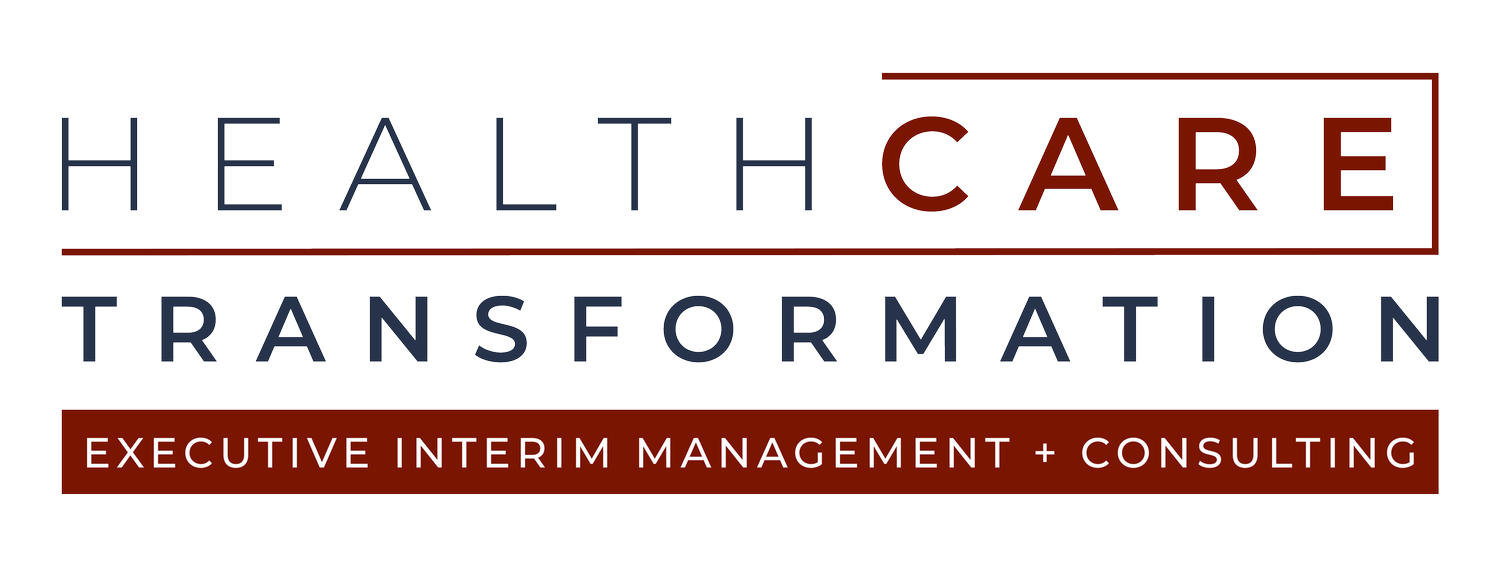How to Reduce Time-to-Hire for Critical Hospital Leadership Roles
Strong hospital leadership maintains high-quality care, operational efficiency and organizational stability. But filling these executive roles can be a slow, competitive process that strains resources and leaves hospitals exposed to leadership gaps. Accelerating healthcare executive recruiting and prioritizing rapid executive placement can reduce these risks and ensure continuity in leadership. Streamlining leadership hiring isn’t just about saving time. It’s about safeguarding performance and patient outcomes
Learn about the challenges healthcare organizations face with hiring and how interim healthcare roles ensure continuity in patient care.
Why Time-to-Hire is Especially Critical in Healthcare
Hospital executives do far more than make high-level decisions. They keep the entire operation steady day to day. They manage budgets, guide staffing and ensure regulations are met, all while keeping patient safety at the forefront. When one of these roles is left unfilled, the effects are felt right away: projects stall, workflows get disrupted, staff morale dips and the quality of care can suffer.
Hospitals can’t afford long gaps in leadership. Every day without the right executive in place increases the risk of operational setbacks and missed opportunities to improve patient outcomes. That’s why reducing time-to-hire is not only a staffing priority, but a business and clinical imperative.
Common Challenges in Hospital Leadership Hiring
Finding the right hospital leader comes with hurdles, and the numbers make it clear how steep those challenges are:
A rare blend of skills: Leaders need a mix of clinical insight, sharp operational knowledge and savvy people skills. Yet where medical school focuses on the highly specialized acts of delivering complex medical care, leadership development takes a back seat.
Organizational fit matters, and it’s elusive: Even when executives have the credentials, ensuring they mesh culturally and structurally with a hospital’s leadership team and care demographic can be a complex, delicate process.
A tight talent pool for senior roles: Executive-level positions across all industries are slow to fill, and can take 120 days or longer to find the right fit. That far outpaces hiring for less senior roles, and even director and senior-level roles can take 90 and 75 days, respectively, to fill. Additionally, a 2023 report from the American College of Healthcare Executives found that hospital CEO turnover remained steady at 16% for three years, resulting in a steady demand for replacements.
Slow vetting and approvals drag things out: The average time-to-fill for healthcare leadership positions is two months thanks to credentialing, background checks and multi-layer approvals.
The Cost of Long Executive Searches in Healthcare
Extended executive searches ripple across every part of a hospital’s performance. From stalled initiatives to financial losses, leadership gaps create vulnerabilities that hospitals can’t afford to ignore.
Operational Impact
Hospital executives steer strategy, manage resources and keep operations aligned. Without them, decision-making slows, projects get delayed and teams are left to fill gaps without clear authority. A vacant chief financial officer seat, for example, can stall budget approvals and vendor negotiations, while the absence of a director of nursing can disrupt staffing plans and patient flow.
Financial Burden
Executive vacancies hit the bottom line hard. Hospitals lose out on revenue opportunities when growth projects stall, and misalignment in budgeting or staffing can drive overtime expenses and inefficiencies. Worse, if pressure to fill the role quickly results in a poor hiring decision, the resulting cost can be enormous — 30% of the employee's yearly salary.
Staff Morale Decline
When leadership roles sit empty, the uncertainty trickles down to staff. Employees may feel directionless, unsupported or overburdened by picking up extra responsibilities. This leads to stress, disengagement and higher turnover. Nurses and frontline staff, in particular, rely on clear communication and stable leadership to feel confident in their work. Morale directly impacts patient satisfaction scores, care quality and overall performance.
Patient Care Risks
Every hospital’s core mission is patient care, and leadership gaps put that mission at risk. Executives set the tone for safety protocols, compliance and accountability. Without their oversight, even well-trained teams can struggle with delays in addressing critical issues, inconsistent application of standards or gaps in resource allocation.
Interim Executive Placement: A Solution for Rapid Leadership Coverage
When a hospital faces a leadership vacancy, the gap can create real operational and strategic challenges. Interim executive placement provides a flexible solution, bringing in experienced leaders to maintain stability while permanent searches are underway.
How Interim Staffing Firms Work
Interim staffing firms partner with hospitals to understand exactly what they need in a leader. They leverage a curated database of experienced executives to connect the hospital with candidates ready to step in. The firm stays involved throughout the process, supporting onboarding, transition and ongoing alignment to ensure the interim leader can make a seamless impact from day one.
What Interim Executives Bring to the Table
Interim executives bring proven experience and the leadership presence needed to guide teams through transitional periods. They keep day-to-day operations running smoothly and maintain momentum on key initiatives, all while the search for a permanent hire continues.
Rapid Executive Placement vs. Traditional Recruiting
Sourcing, interviewing and onboarding a permanent leader takes time. Interim placements can happen in a matter of weeks, so hospitals don't have to worry about delays while continuing the search for the right long-term fit.
Flexibility and Strategic Impact
Interim executives offer more than just a temporary fix — they provide strategic value. While stabilizing day-to-day operations, they can advance high-priority projects, evaluate organizational processes and create space for leadership teams to continue their workflows. This combination of flexibility and strategic impact makes interim placement a smart choice for hospitals that can't afford ongoing leadership gaps.
Best Practices for Streamlining Hospital Leadership Hiring
Reducing time-to-hire for critical hospital leadership roles requires a strategic, multi-faceted approach. The following best practices help ensure the process is efficient and effective:
Partner with specialized healthcare executive recruiting agencies. Working with firms that focus exclusively on healthcare leadership connects hospitals to a curated pool of qualified candidates and accelerates the search process.
Clearly define the role and expectations upfront. Establishing the competencies, responsibilities and performance metrics needed for the role before starting the search ensures alignment between candidates and organizational needs.
Use data-driven assessment tools. Structured assessments, behavioral interviews and skills evaluations provide objective insights, speeding up candidate evaluation and reducing the risk of mis-hires.
Leverage interim placements. Bringing in experienced interim executives allows hospitals to maintain operational continuity while conducting a thorough permanent search, minimizing gaps in leadership.
Streamline internal approval and decision-making processes. Reducing bottlenecks in approvals, background checks and credentialing can dramatically shorten overall time-to-hire.
Maintain proactive talent pipelines. Building relationships with potential candidates before a vacancy arises enables faster placements and reduces dependence on reactive hiring.
Success Stories: Interim Leadership in Action
HCT has worked with countless healthcare organizations to keep momentum going during leadership transitions. When a major Bay Area healthcare system faced inconsistent workflows, documentation issues and leadership gaps, HCT placed an interim executive to lead process improvements across all 12 facilities. By introducing automation, aligning staff with industry standards and providing targeted education, the leader helped recover over $2 million in lost revenue, reduce registration errors to improve patient access and strengthen leadership while navigating union-related resistance.
In California, two hospitals in a health system were facing gaps in training for new graduates and clinical staff, resulting from inconsistent orientation, unclear expectations and limited structure. Unfortunately, it impacted patient care. HCT placed an interim leader to design and implement a standardized onboarding and training program tailored to both hospitals’ needs. The interim executive worked closely with educators and local leadership to establish clear orientation schedules, defined training roles and introduced ongoing professional development initiatives. The program quickly became the recommended standard across the entire health system.
Accelerate Your Hospital Leadership Hiring with Interim Executives
Long executive searches leave hospitals exposed to operational disruption, financial loss, staff uncertainty and risks to patient care. Interim executive placements offer a proven solution, providing experienced leaders who can step in immediately, maintain continuity and advance strategic priorities while permanent searches are underway.


